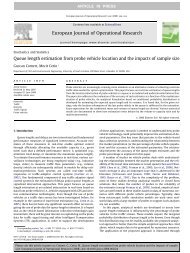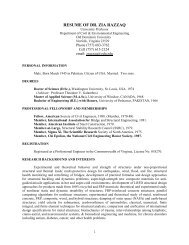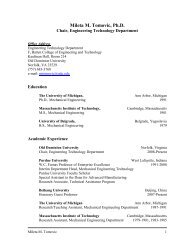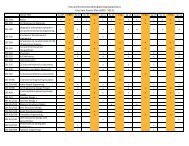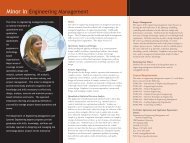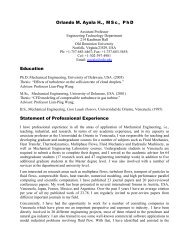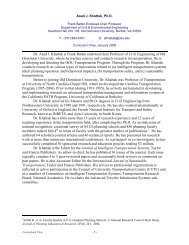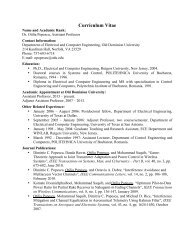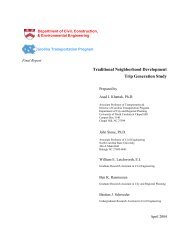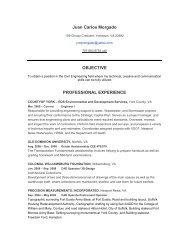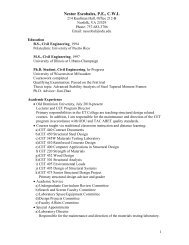storm water management model, version 4: user's manual
storm water management model, version 4: user's manual
storm water management model, version 4: user's manual
You also want an ePaper? Increase the reach of your titles
YUMPU automatically turns print PDFs into web optimized ePapers that Google loves.
event and continuous simulation, eliminating parameter ICRAIN. Runoff uses a wet,dry and intermediate (wet/dry) time step defined by the user.9) This <strong>version</strong> of SWMM tries to use more Fortran primitives. There is one subroutineto read interface files, one subroutine to write interface files, one clock subroutine,one file opening routine etc. for all blocks. The common functions of all blocks areexactly the same.10) This <strong>version</strong> can be made more modular than the EPA Version 3 for themicrocomputer. It is possible to run files containing only the blocks of interest,saving the interface file for use by the next block. This permits file compression forease of distribution and much faster execution times.11) The Graph Block is no longer limited to 200 data points. An unlimited number ofpoints for both measured and predicted graphs can be plotted. Graph plotsloadographs (mass/time versus time) and pollutographs (concentration versus time).12) The user has more control over printout in this <strong>version</strong> of SWMM. Most printoutcan be bypassed at the user’s discretion. Error messages are summarized at the endof a run instead of being printed every time step.13) Microcomputer users will see the current time or time step printed on the screenduring the simulation as well as other program messages.When Should SWMM Be Used?SWMM is a large, relatively sophisticated hydrologic, hydraulic and <strong>water</strong> quality simulationprogram. It is not appropriate for all applications or for all personnel. For instance, hydrologicrouting (e.g., prediction of runoff from rainfall) may be performed simply using standard techniques(e.g., units hydrographs, linear reservoirs) described in hydrology texts and suitable forprogrammable hand-held calculators (e.g., Croley, 1977) or microcomputers (e.g., Golding, 1981).In addition, many other, smaller Fortran programs are available for urban hydrologic simulation thatmay be entirely suitable for a given problem and much easier to implement on a given computersystem. Notable among the hundreds of such program are the Corps of Engineers, HydrologicEngineering Center program STORM (Roesner et al., 1974, HEC, 1977a) for continuous simulationand the Illinois State Water Survey program ILLUDAS (Terstreip and Stall, 1974) for single-eventsimulation and pipe sizing. Both have good documentation and user support and have beenextensively tested and utilized by engineers other than the <strong>model</strong> developers. HSPF (Johanson etal., 1980) is another alternative for catchments that are primarily nonurban or that require moresophisticated simulation of pollutant interaction.SWMM is certainly formidable both in terms of its size and capabilities. Who, then, shoulduse SWMM and for what purposes? Some criteria for usage are given below:1) The engineer must be knowledgeable of the <strong>model</strong>ing techniques (e.g., non-linearreservoirs, kinematic waves, St. Venant equations, buildup-washoff equations). Anappreciation for how physical processes may be simulated in a Fortran program is anecessity. As a corollary, the engineer is assumed to be familiar with the problem tobe solved and with customary techniques for handling it. A clear problem definitionis a prerequisite to any solution methodology.2) By virtue of the problem size (e.g., sewer system with hundreds of pipes) orcomplexity (e.g., hydraulic controls, back<strong>water</strong>) a simpler technique or <strong>model</strong> willnot work. It may be borne in mind, however, that if calibration/verification data are15



